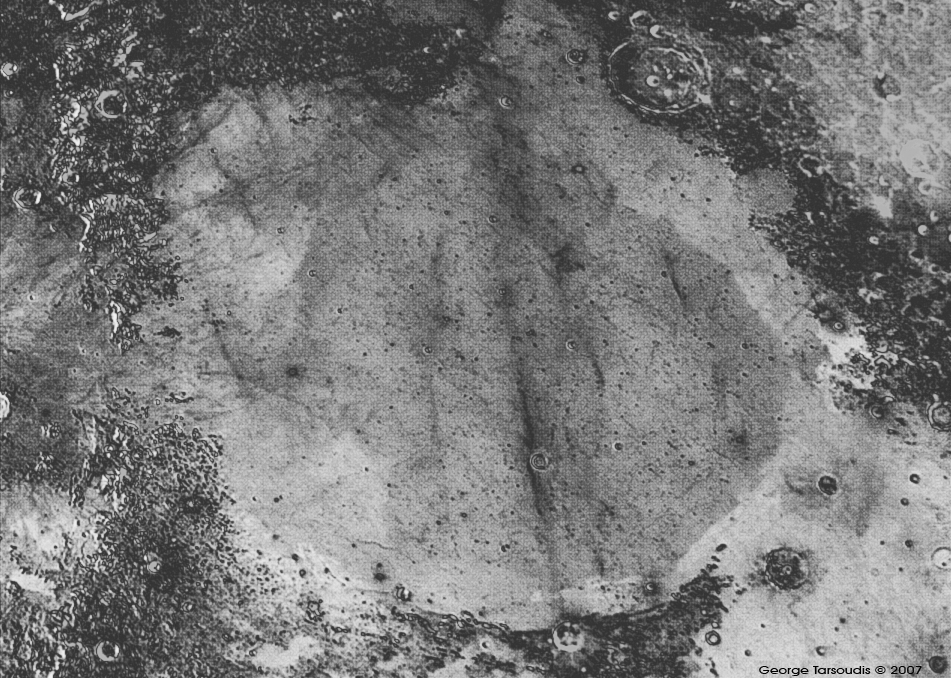
image by George Tarsoudis, Alexandroupolis, Greece
Looking differently means seeing anew. Mare Serentitatis is well placed and easy to find, but there often seems to be little to see. George’s simple reversal of one of his full Moon views of the mare encourages a fresh look. The strongest feature is the conspicuous collar at the edge of the mare. This is caused by the exposure of older dark lavas (remember light is dark in this reversed view) along the high parts of the mare - the lower inner region is covered by a thin layer of younger, brighter lavas. The round dark spots on the dark lava are small impact craters - this reversed view makes them more apparent than in normal views. Note also the narrow dark streaks that are rays. There is a thin ray west of and parallel to the famous Bessel ray. If both rays are from the same source, it is more likely to be Tycho than Menelaus. There are many other faint stray ray elements whose sources are not evident - for example, the two parallel ones south of le Monnier. This broad view also highlights the near hemispheric embayment at the northwest end of Serenitatis. This is perhaps an older version of Imbrium’s Sinus Iridum, an old crater (or small basin) whose southern rim was either decapitated by the formation of the Serenitatis basin or is buried under the Serenitatis lavas.
Technical Details:
May 27, 2007.
Related Links:
Rükl plates 13, 14, 23 & 24
George’s website
Yesterday's LPOD: A New Swirl
Tomorrow's LPOD: Not Full, not Blue
COMMENTS?
Register, Log in, and join in the comments.



